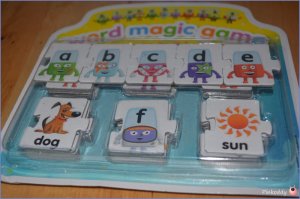
Pack 1 is Red and Orange levels (first steps and next steps
Alphablocks: Introducing the alphabet and its sounds
It is important that children learn the correct sounds for each of the letters. If you are
Blending
I was worried that our Sensory Seeker wouldn’t get blending. It must be extra hard for him to try to filter out the extra sensory input whilst he remembers the sounds and tries to put them together again. This is really important for his Phonics test at the end of year 1. In this children are given 40 words and nonsense words that can be phonetically sounded out. The children need to use the rules of phonics with the correct sounds even for the nonsense words, to demonstrate that they understand the rules of phonics.
Alphablocks: High Frequency Words
High frequency words are those that cannot be sounded out phonetically (such as THE). To read them then you just have to remember what they say by sight. We have them attached to walls and doors around our house. By the end of the Reception year children should know 45 high frequency words. Our Sensory Seeker could read about 10 when going into Year 1 so I was pleased to see so many fun ways to help him catch up with his peers.
Pack 2: Yellow Level (arriving December 2014)
Pack 3: Blue and Green Levels (arriving Easter 2015)
This final stage moves onto words with letter blends, magic E (also known as a split diagraph eg. A_E), and long vowels. The programme concludes with a certificate.
What I thought to the Alphablocks Reading Programme
I liked all the different sensory input for my son. So many different visuals, puppets for
I’d love to see the series continue onto homophones (words that are pronounced the same as another word but differs in meaning, and sometimes also spelling) and other things they will be required to know grammar-wise for their SATs in Year 2. The box was very comprehensively packed with resources so it would have been nice if everything required was readily available (pencil crayons, scissors and glue were still required). All in all though I thought that the pack was absolutely amazing and a fantastic price (think how much you pay for those foreign language courses!) – as well as being a lot of fun.
You may also be interested in my Writing Skills Development post.
We received this programme free in return for an honest review. I will update further when the other 2 packs arrive. All words and opinions are my own.